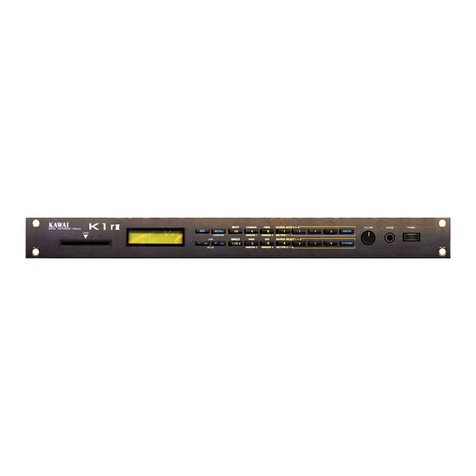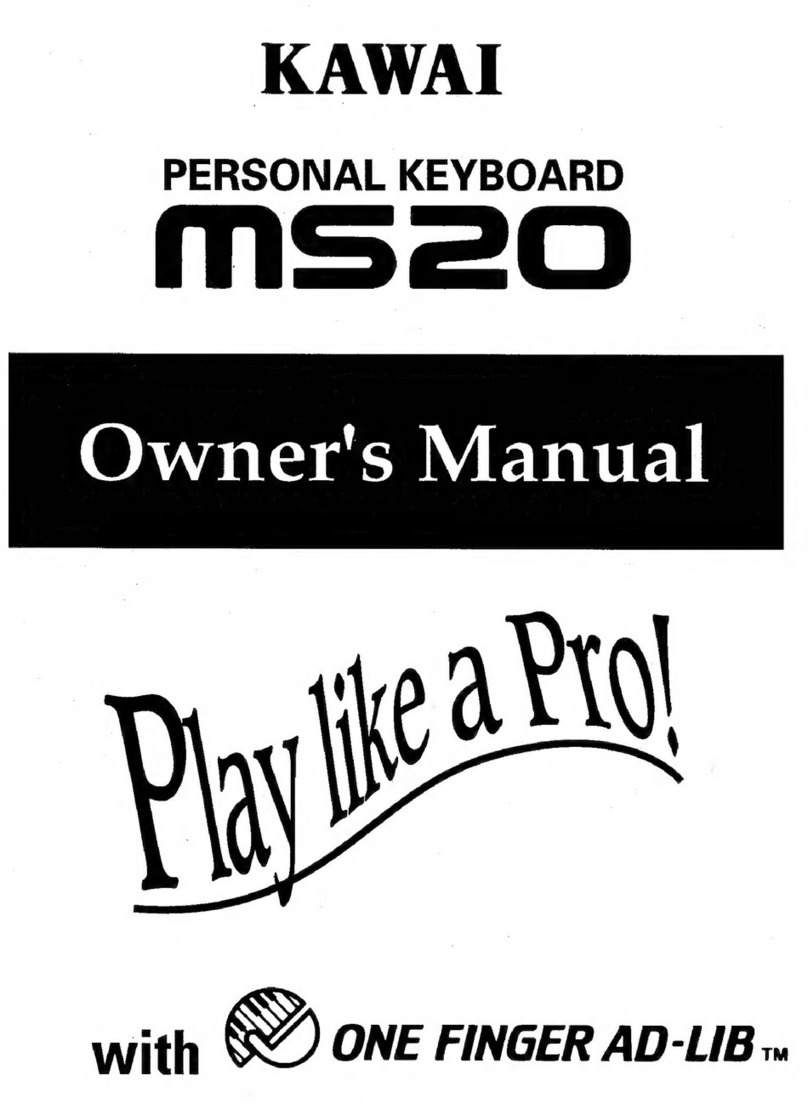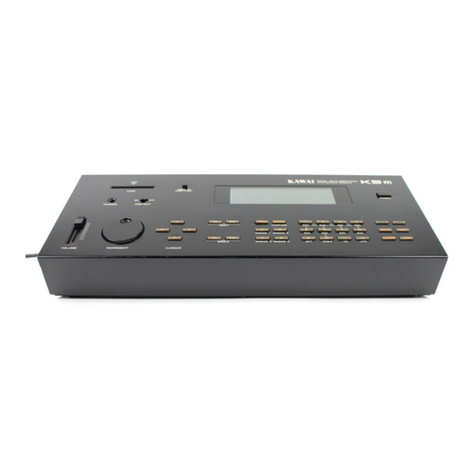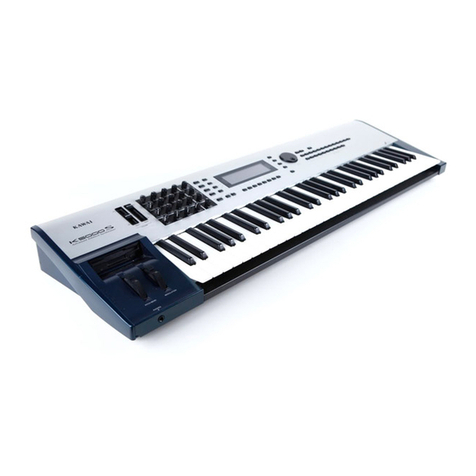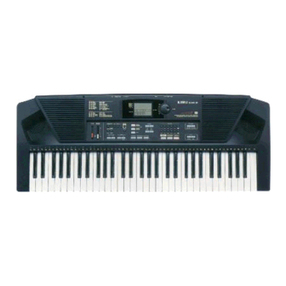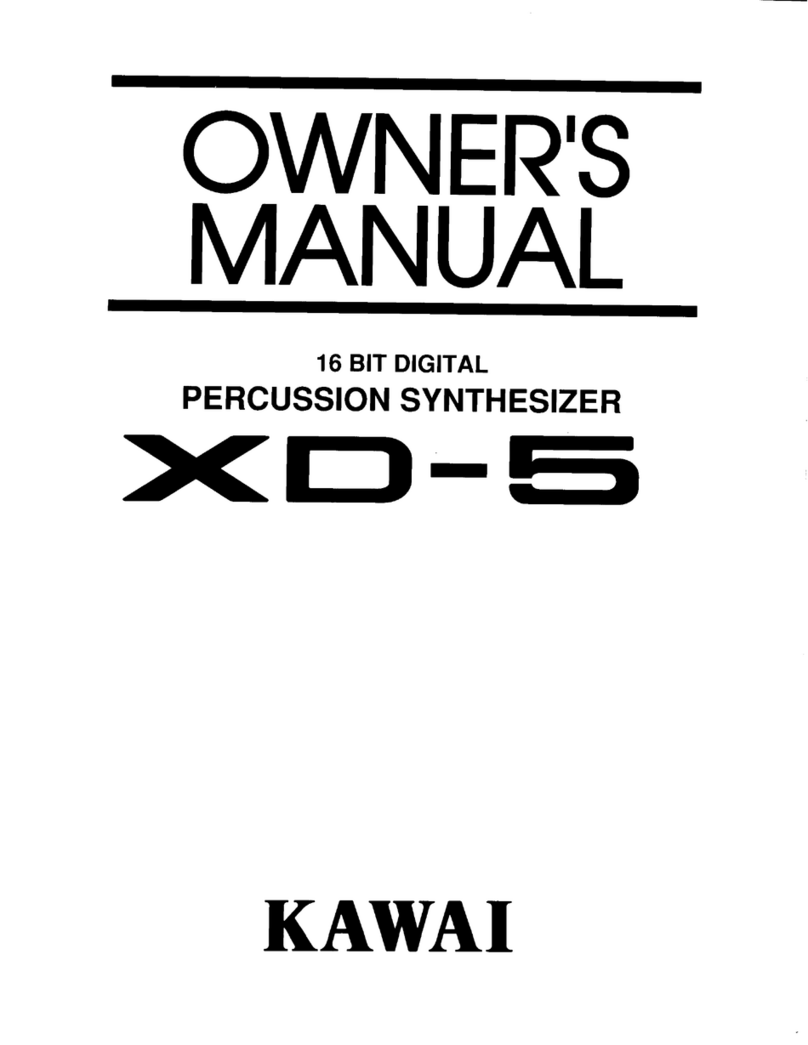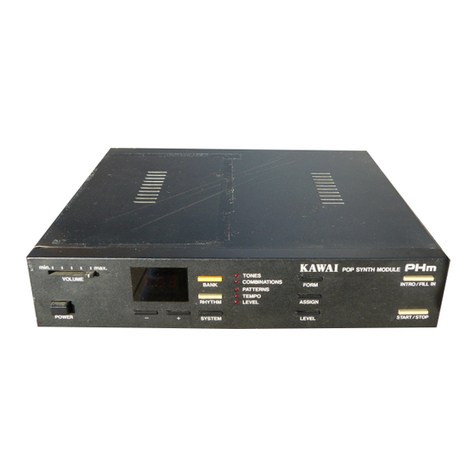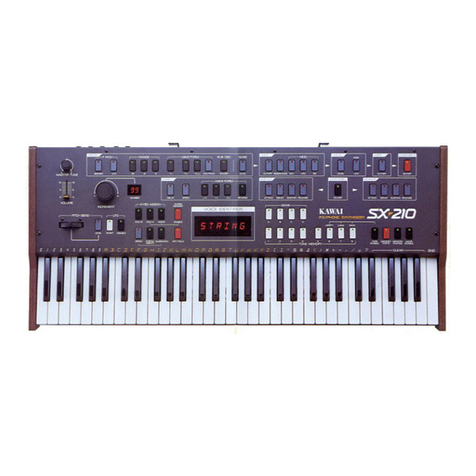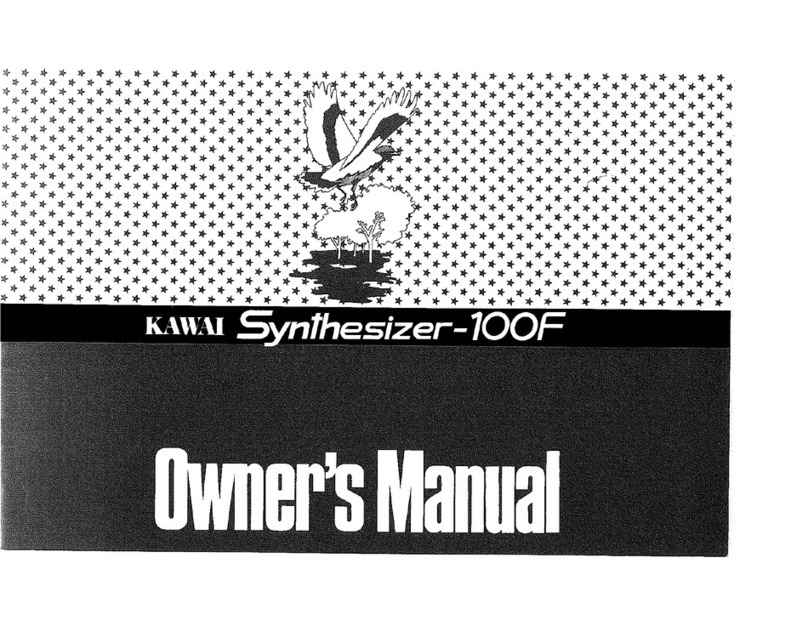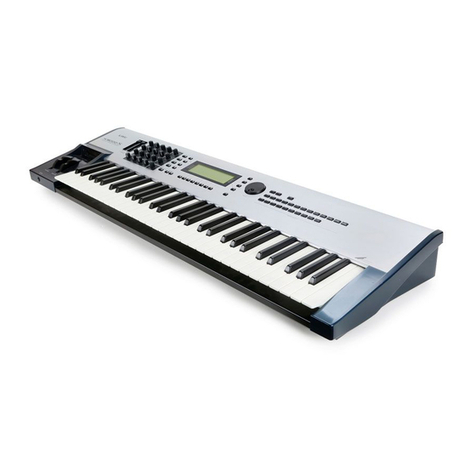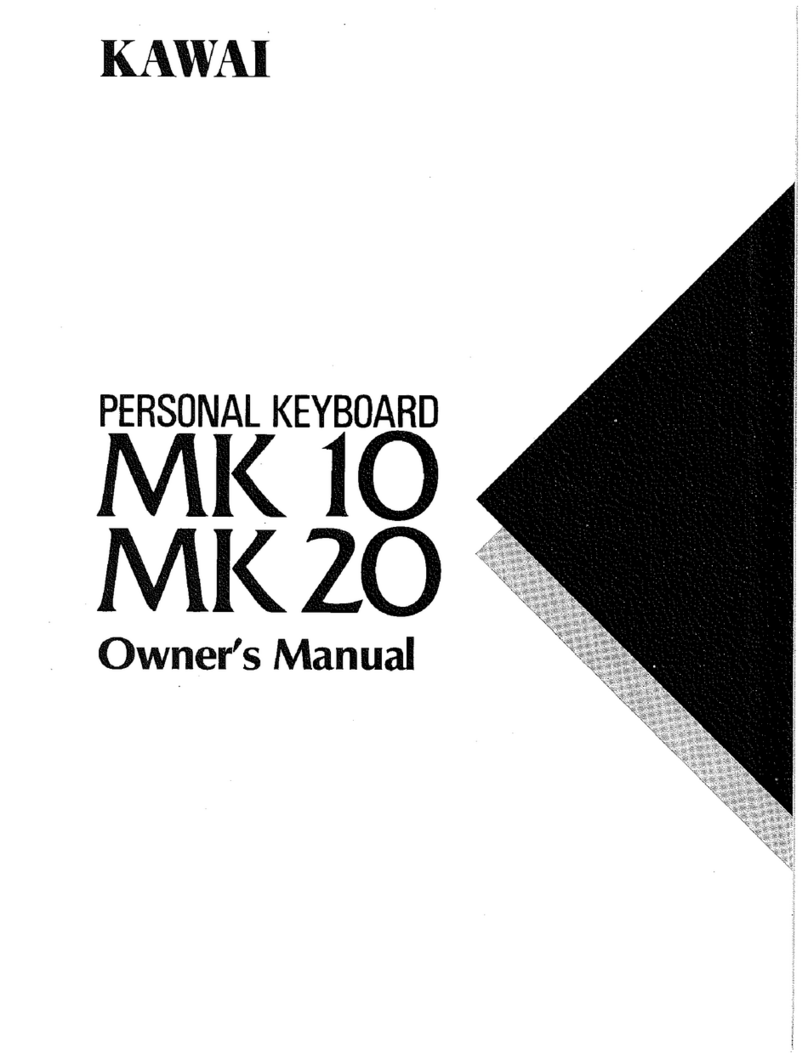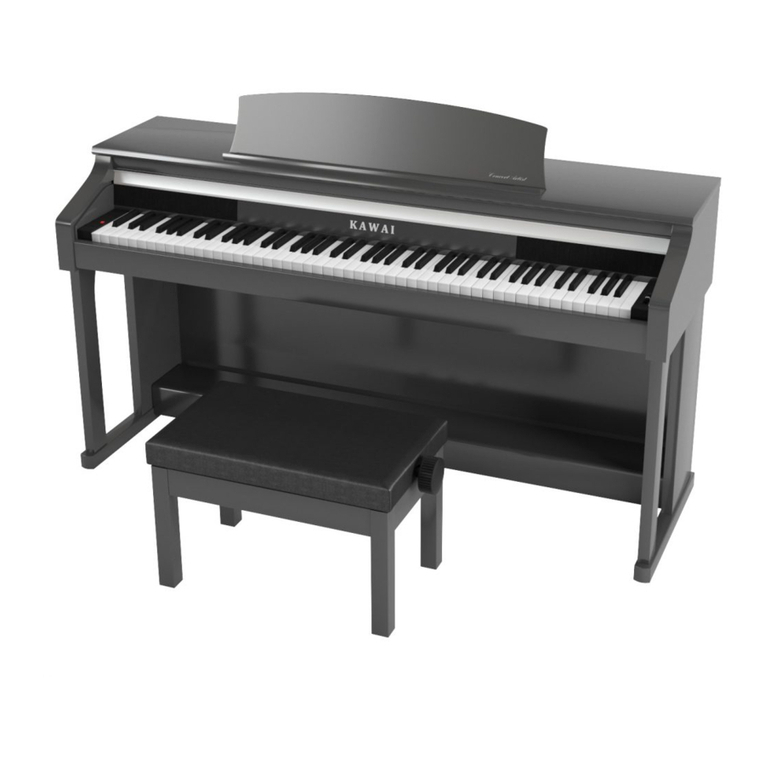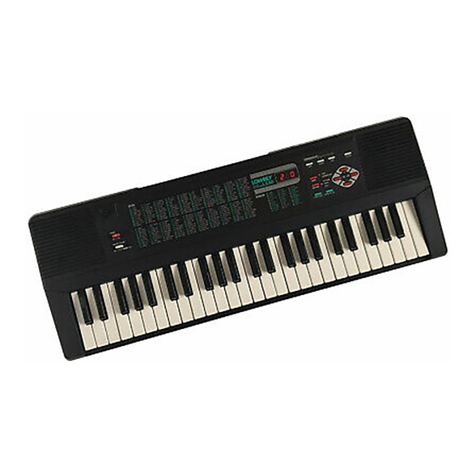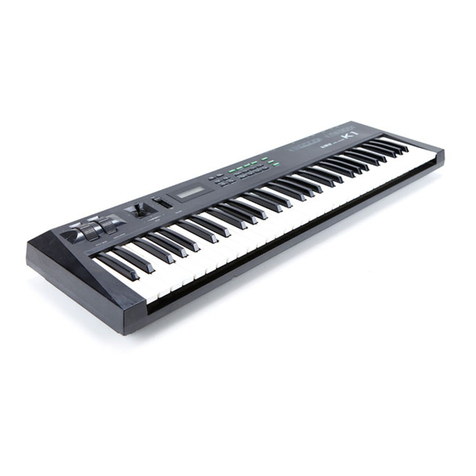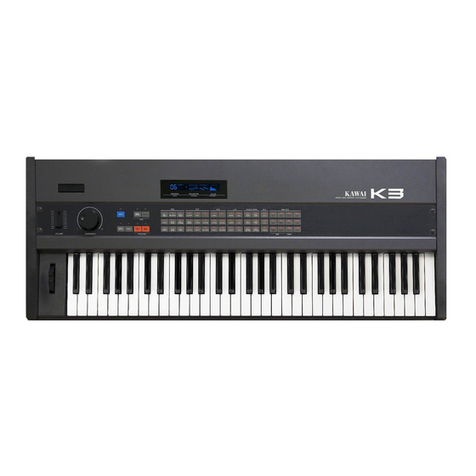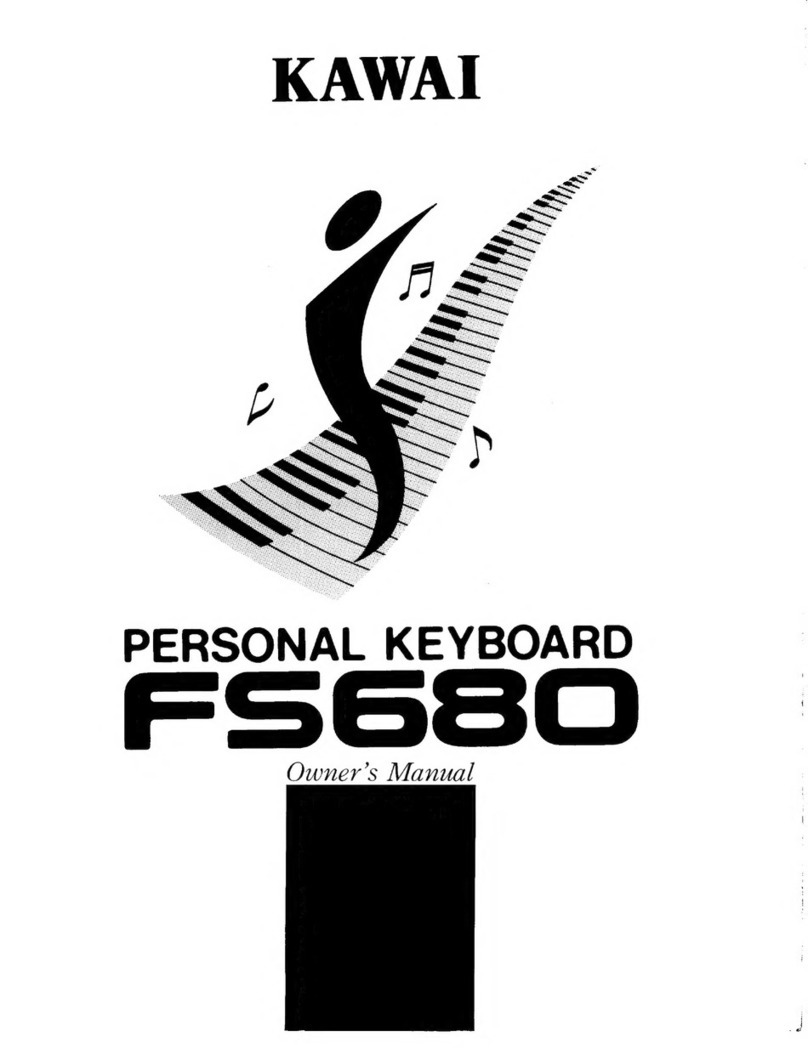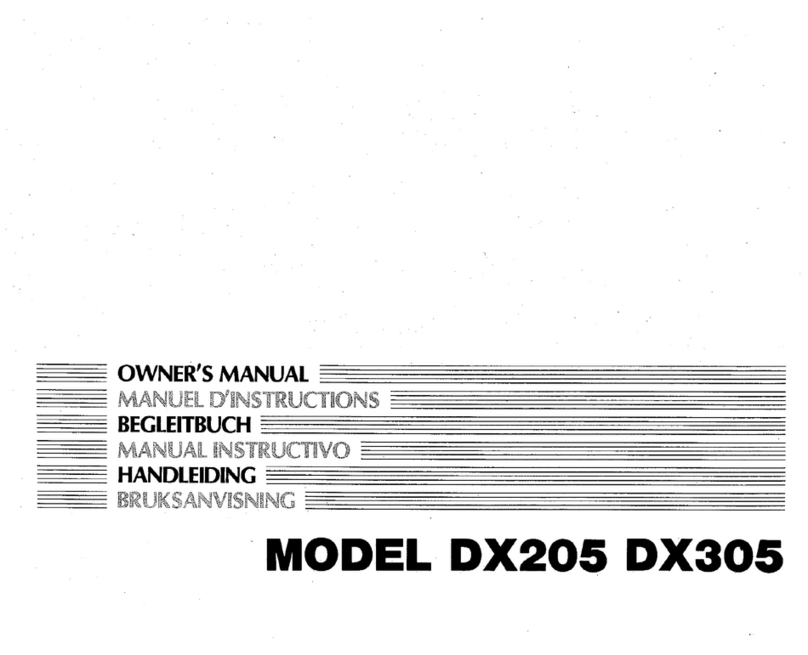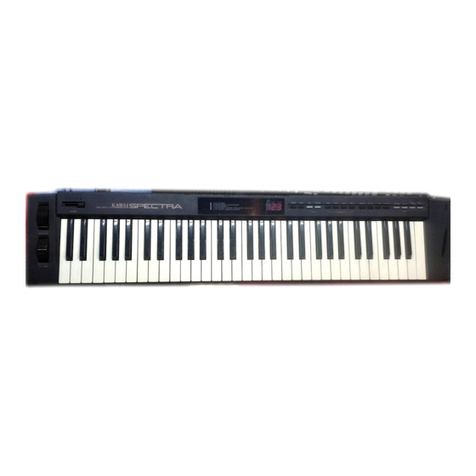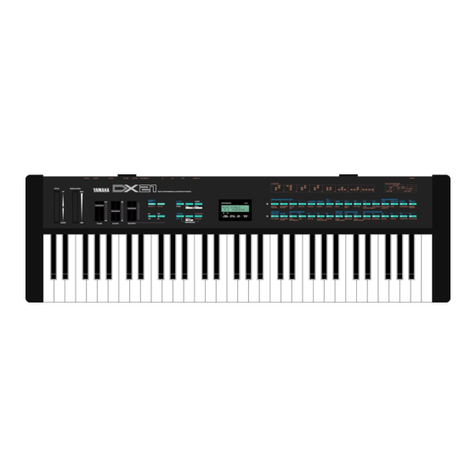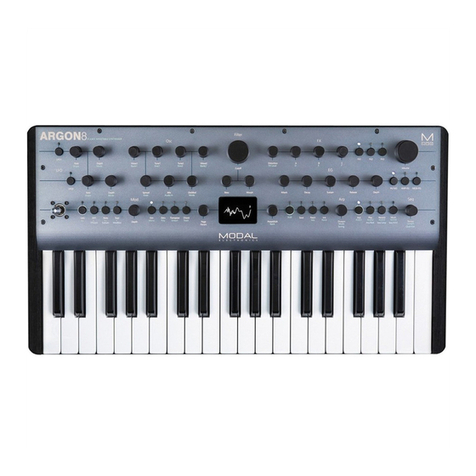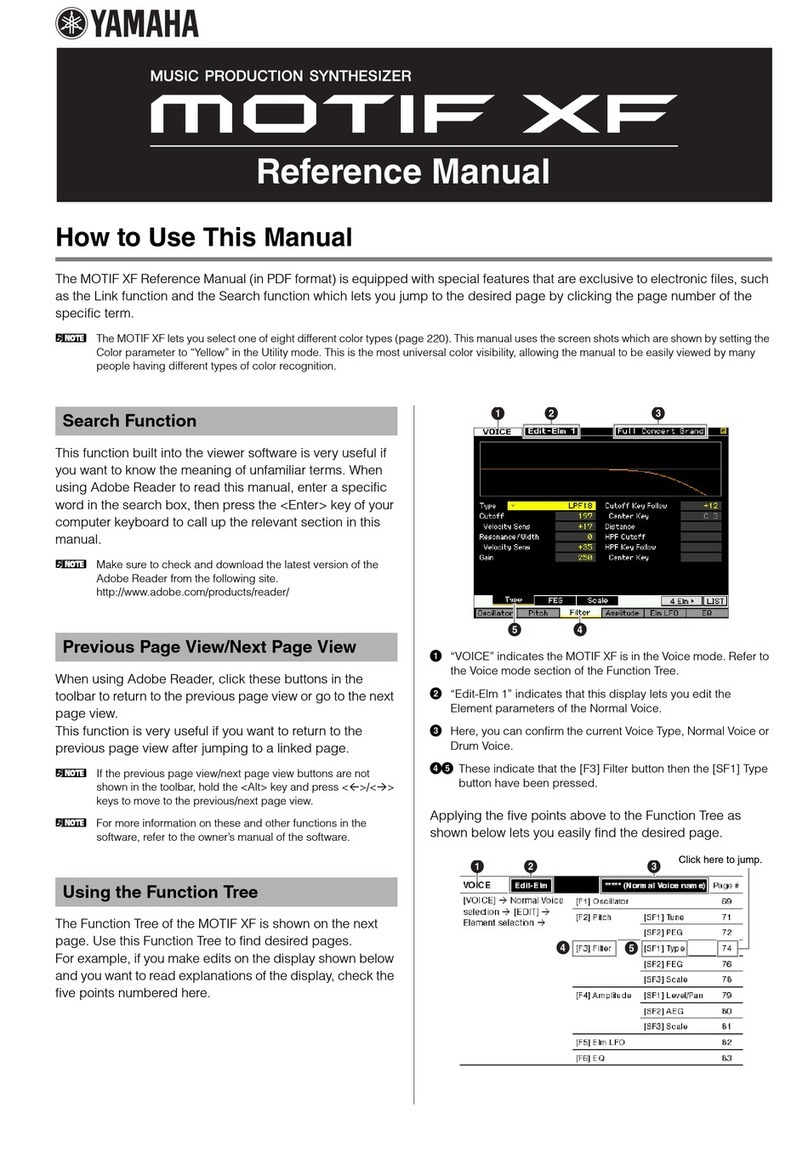Kawai K3 – a rare hybrid synthesizer
| 1
The Kawai K3 is a typical representative of those mid-80ies synthesizers: membrane buttons (instead of real
buttons), an Alpha Dial which is used to edit the extensive selection of parameters, plus a six-voice hybrid sound
engine. The latter consists of two wavetable oscillators, a VCF and a VCA per voice. The LED display is huge (similar
to that of a Korg DW-8000, but much bigger).
In its appearance, the Kawai K3 (released in 1986) is reminiscent of the DX-7, just like the Oberheim Matrix-6, Casio
CZ-Series, Sequential 2000, Roland Alpha Juno 1/2, JX-8P/10, and others.
A few general thoughts on the instrument
The Kawai K3 is a very professional hybrid synthesizer. It’s a mix of digital oscillators, additive/substractive
synthesis and analog filters
x
VCF and VCA give the sound a lot of depth and warmth
x
The wavetable oscillators, on the other hand, can easily produce sounds similar to a PPG Wave synthesizer
